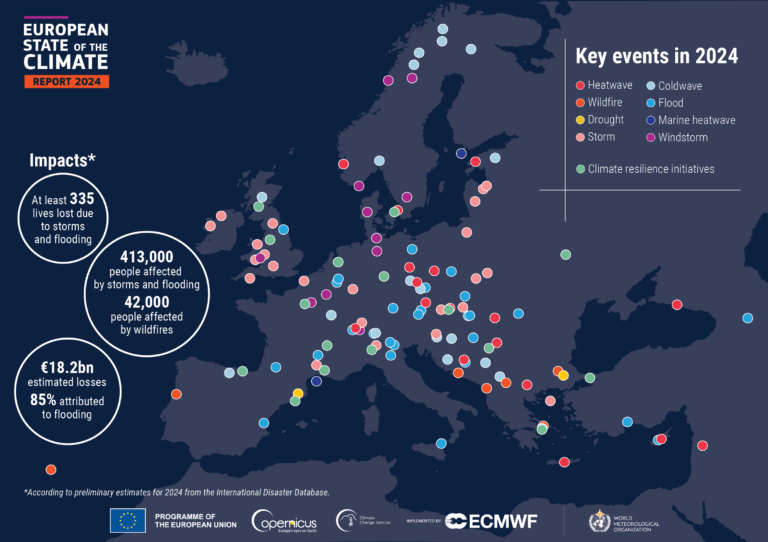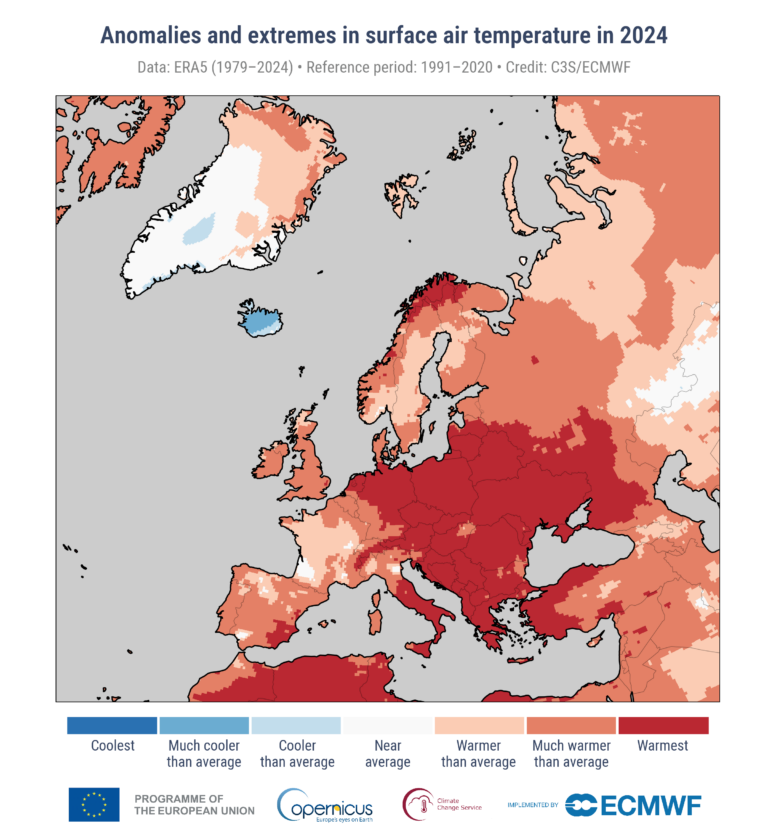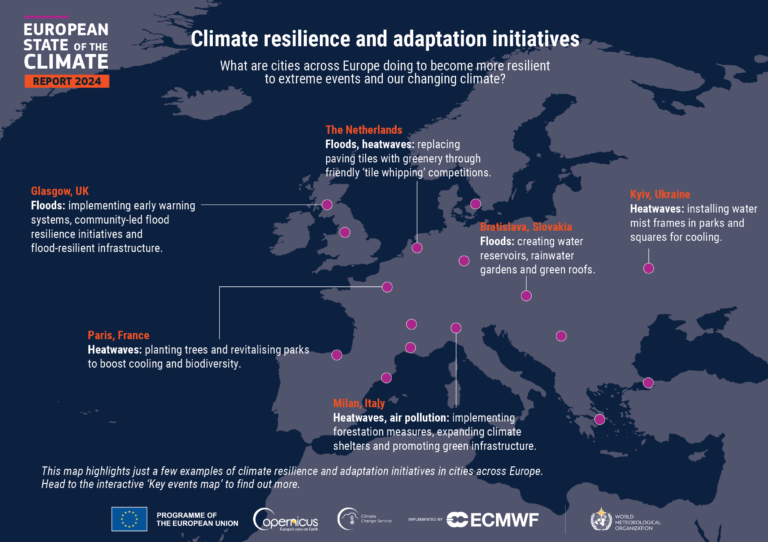Europe has officially been named the world’s fastest-warming continent, with 2024 registering as the hottest year on record, according to the European State of the Climate 2024 report jointly released by the World Meteorological Organization (WMO) and the Copernicus Climate Change Service (C3S).
The report paints a stark picture of a continent grappling with the multifaceted effects of climate change. Central, eastern, and southeastern Europe faced unprecedented temperatures. Meanwhile, severe storms and widespread flooding led to the loss of 335 lives and affected approximately 413,000 people across the region.
WMO Secretary-General Celeste Saulo emphasized the urgency of the situation, stating,
“Every additional fraction of a degree of temperature rise matters because it accentuates the risks to our lives, to economies and to the planet. Adaptation is a must”
Despite these sobering figures, there were notable advancements. Europe reached a milestone in clean energy, with renewables accounting for 45% of the continent’s electricity generation in 2024—a record high. This follows a trend of increasing adoption of renewable energy, up from 43% in 2023.
Climate Extremes and Economic Loss
Europe experienced its most widespread flooding since 2013, with nearly one-third of the continent’s river systems surpassing high flood thresholds. Both hot and cold extremes were recorded, with heat stress levels reaching the second highest levels on record. Around 60% of Europe saw an above-average number of days with at least ‘strong heat stress,’ while ‘strong cold stress’ days reached an all-time low.

Extreme weather events led to an estimated €18 billion in damages, 85% of which was attributed to flooding. Glaciers in Scandinavia and Svalbard experienced their highest mass loss rates ever, and fires in Portugal burned an estimated 110,000 hectares in just one week.
Regional Climate Hotspots
Certain regions, like the Mediterranean and the Alpine zone, are being identified as climate change hotspots. These areas are experiencing accelerated warming, increasing droughts, and heightened wildfire risks. The Mediterranean, in particular, is facing significant socio-economic and ecological vulnerabilities.

C3S Deputy Director Samantha Burgess highlighted these challenges, saying,
“The Mediterranean region is widely recognized as a climate change hotspot… Similarly, the Alpine region is experiencing above-average warming and sensitive cryospheric changes”
Setbacks in Climate Monitoring
A notable concern raised in the report is the impact of U.S. funding cuts to the National Oceanic and Atmospheric Administration (NOAA). These cuts have reduced the number of global climate observations, which play a vital role in data collection and forecasting.

Florence Rabier, Director-General of the European Centre for Medium-Range Weather Forecasts (ECMWF), warned,
“Any observation loss is a loss for climate monitoring, for calibration of satellite, for verification of forecasts… it would indeed have an impact on the whole community”
Progress in Urban Adaptation
The report also outlined progress in urban climate action. In 2024, around 51% of European cities had adopted climate adaptation plans, nearly doubling the figure from 2018. Urban areas, responsible for 70% of all carbon emissions globally, are now at the forefront of climate resilience efforts.
C3S Director Carlo Buontempo concluded the press conference by stressing the critical need for immediate action.
“2024 was a year of climate contrasts… but also a wake-up call. Every fraction of a degree matters. Climate adaptation is not a future option. It’s a very real necessity now, today, not tomorrow”
The findings underscore the pressing need for robust, coordinated action across continents, cities, and sectors to address the escalating climate crisis.


